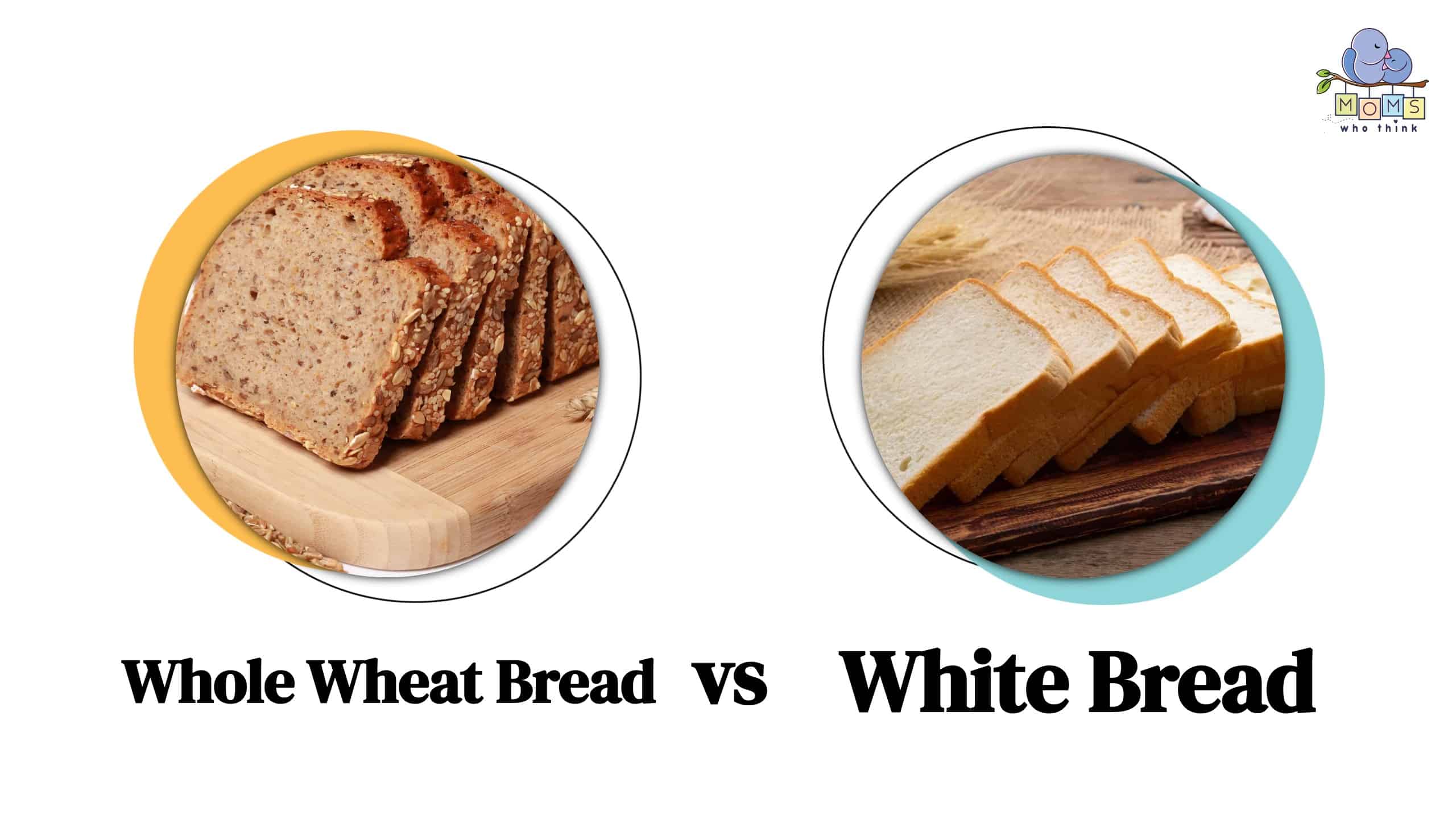For all bread lovers, this is a controversial question. Whole wheat bread vs. white bread, which is your choice? Everyone has allegiance to the bread they think is best. So what's the difference? The easy answer is whole wheat bread contains whole grains and white bread does not. Let's look deeper into these two breads so you can pick the right one for your family during your next grocery store trip.
- The must-have convenient reference guide for every home cook!
- Includes more than 8,000 substitutions for ingredients, cookware, and techniques.
- Save time and money on by avoiding trips to grab that "missing" ingredient you don't really need.
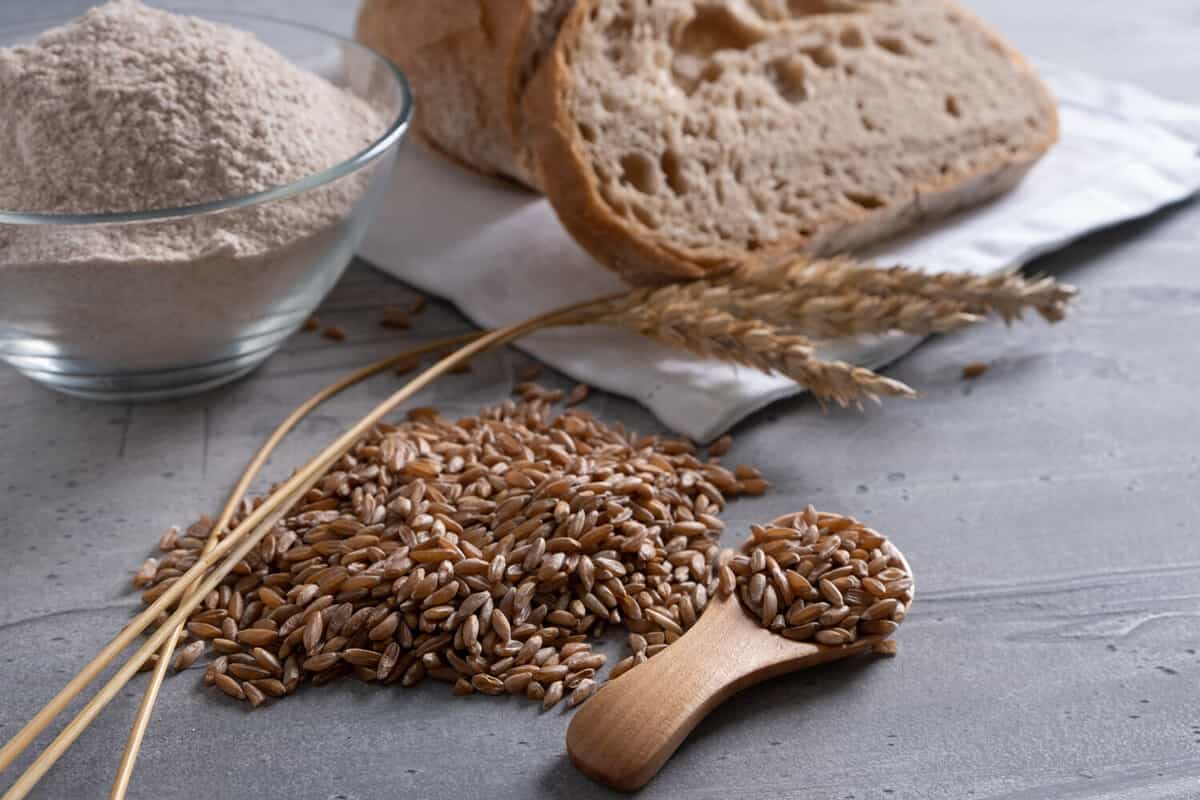
Whole-grain foods are known to be helpful in controlling cholesterol levels, weight, and blood pressure. They are also known to help lower the risk of diabetes, heart disease, and other conditions.
©Ange P/Shutterstock.com
What Are Whole Grains?
If something is whole grain, it means that it has all three parts of the grain; bran, germ, and endosperm. Bran is great for digestive health as it's a source of fiber and can help increase healthy bacteria in the gut and reduce bloating and discomfort. Germ is a good source of folate, magnesium, phosphorus, and zinc. Lastly, the endosperm is the part of the whole grain that contains carbohydrates, proteins, and some vitamins and minerals.
Whole wheat bread contains whole grains. White bread uses wheat kernels that have been processed to only contain endosperm and remove the bran and germ. Why process whole grains you may ask seeing as whole grains have some health benefits? Processing wheat removes the bran and germ and creates a lighter texture and flavor, which has become desirable for some people.
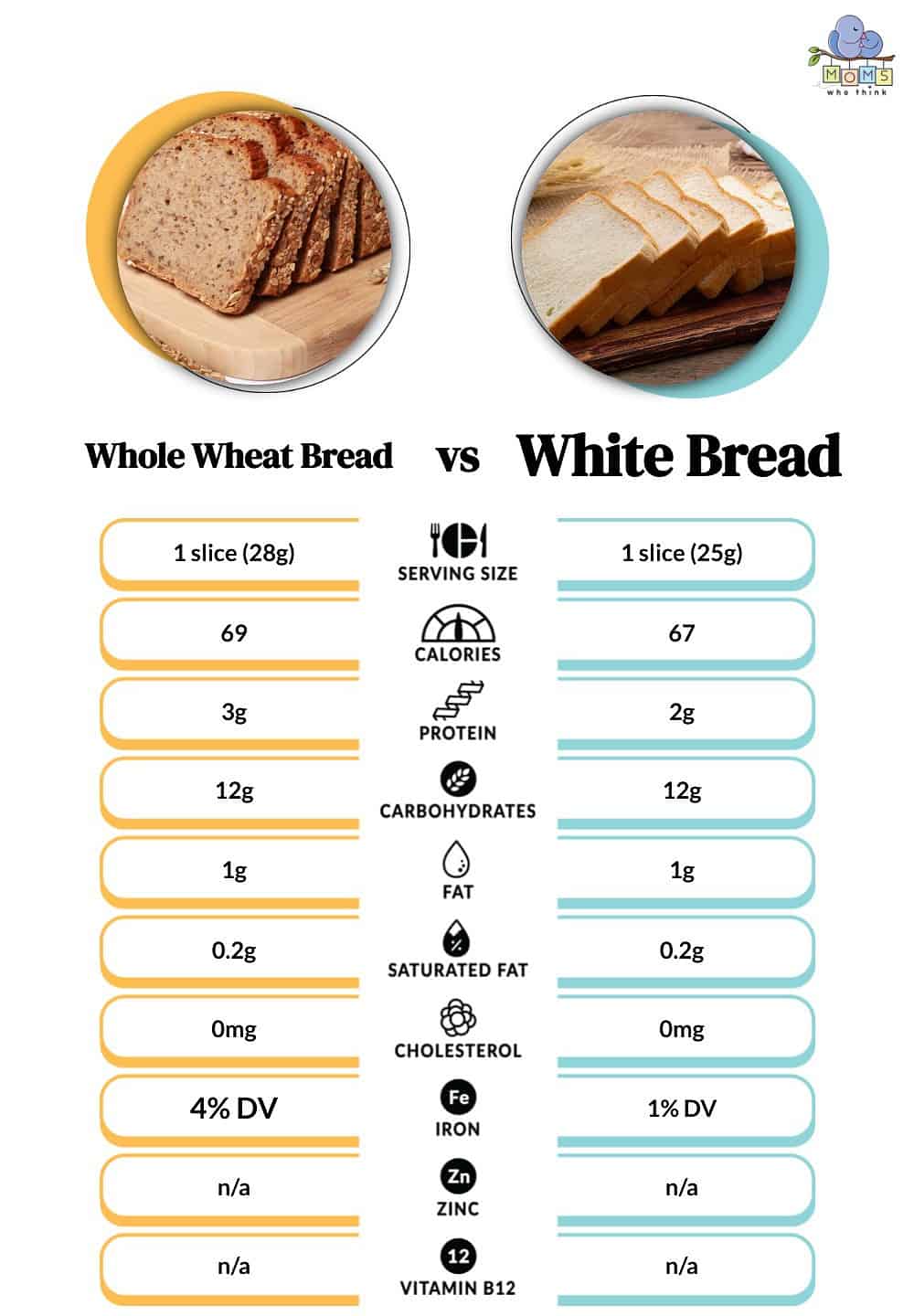
Although similar in calories, protein, carbs, fat, and cholesterol, there are some major differences nutritionally between whole wheat bread and white bread.
©
Whole Wheat Bread vs. White Bread: Nutritional Value
Because whole wheat bread contains whole grains, it has a lot more nutritional value. Caloric and carbohydrate intake is about the same with whole wheat having 69 calories per slice, white bread having 67 calories per slice, and both of them having 12 grams of carbohydrates. The main nutritional differences come when you look at iron and the other components that whole grains contain. Any item that contains whole grains will ultimately be the healthier option as it naturally contains minerals and vitamins. Many companies do artificially add minerals and vitamins back into their white bread since the bran and germ were removed, but whole wheat bread is still seen as the healthier option.
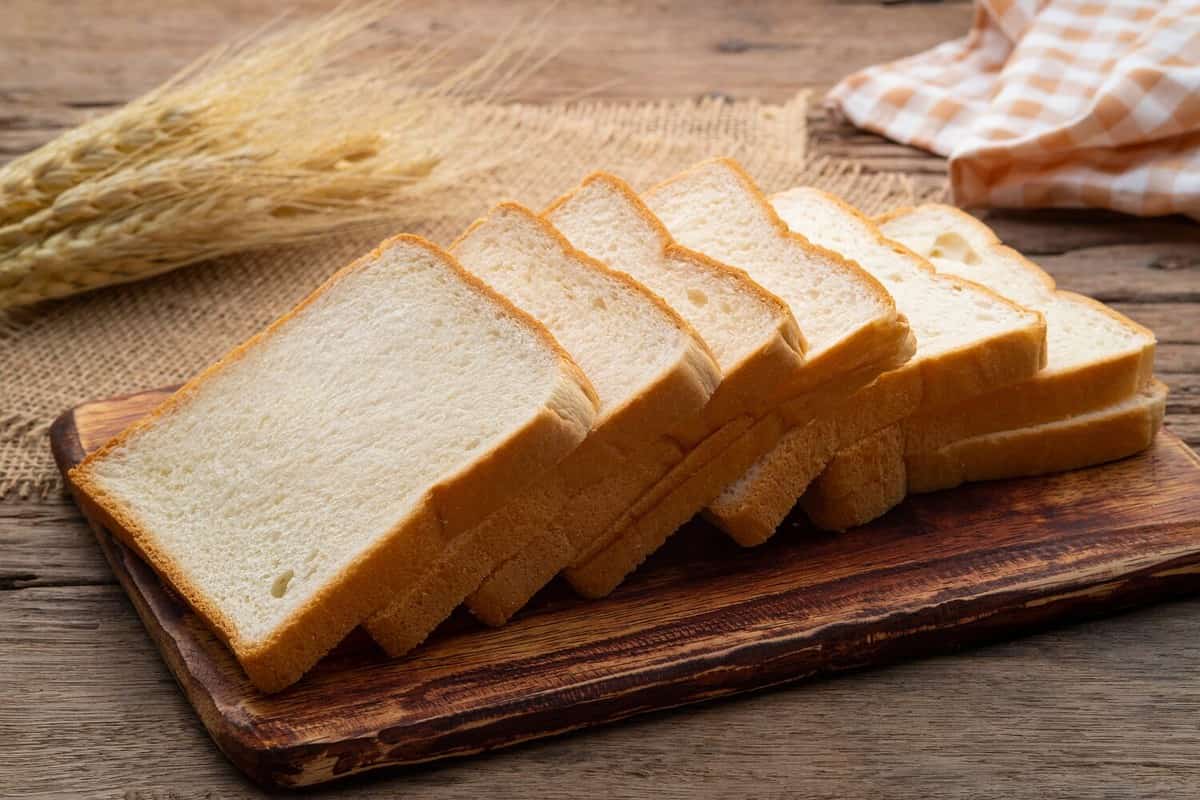
Bread is an important part of human history. Our oldest evidence of bread is from 14,400 years ago. Bread created easy portable calories for the first time in history making it an essential piece of our diet.
©Kritchai7752/Shutterstock.com
Whole Wheat Bread vs. White Bread: Taste and Texture
This category is where there is a lot of opinion between whole wheat bread and white bread. Some people prefer white bread because it is neutral tasting whereas others prefer whole wheat bread because they think it has a sweeter and nuttier flavor. But, that's not the case for everyone! Many people don't like wheat bread because they think it tastes earthy or even sometimes bitter.
- The must-have convenient reference guide for every home cook!
- Includes more than 8,000 substitutions for ingredients, cookware, and techniques.
- Save time and money on by avoiding trips to grab that "missing" ingredient you don't really need.
Because the bran and germ are removed in white bread, you can expect its texture to be smoother and lighter than whole wheat bread. Because whole wheat bread contains more vitamins and minerals, it can be heavier and more coarse in texture.
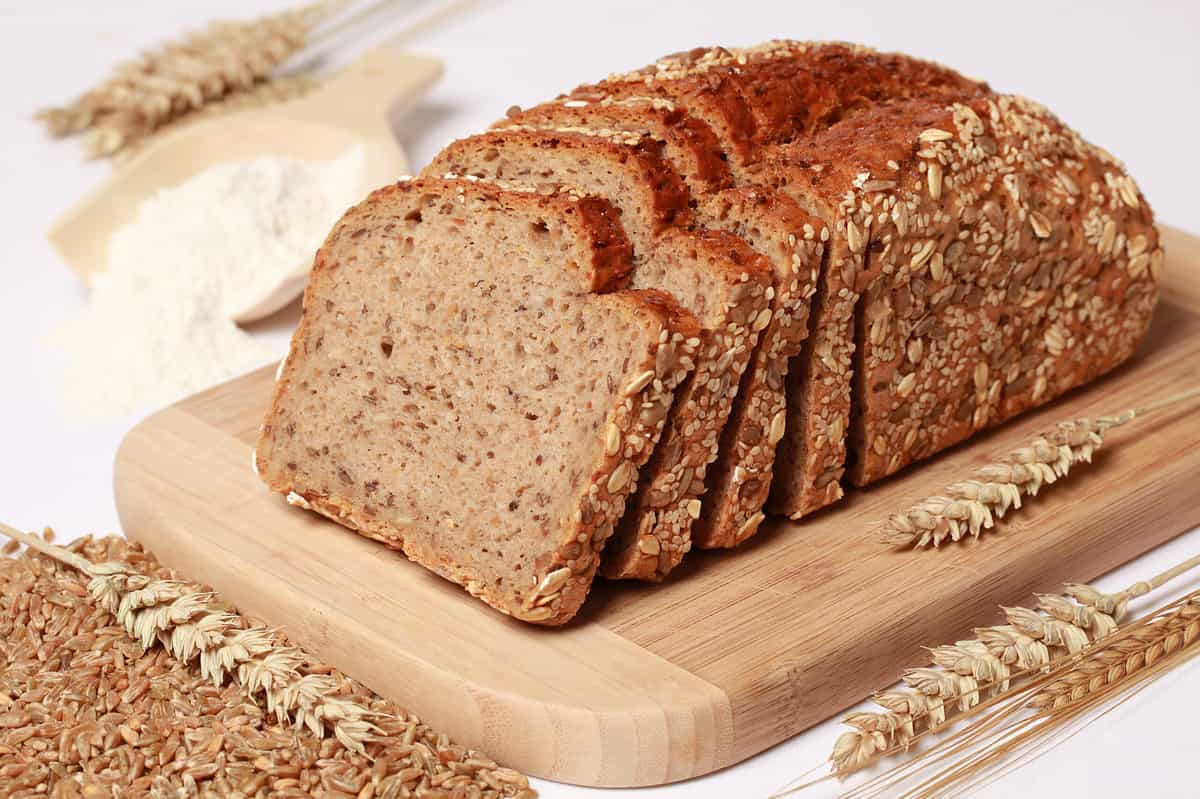
Whole wheat bread is typically easily identified by its appearance in color and texture. The bread is a brown or tan color and often contains grains and seeds in the crust.
©Markus Mainka/Shutterstock.com
Whole Wheat Bread vs. White Bread: Appearance
Whole wheat bread and white bread can usually be easily told apart by their color. White bread is going to be a white beige color whereas whole bread is a brown or tan color. Now, as easy as this seems, this isn't a soundproof way of knowing whether bread is whole wheat or white. Sometimes, caramel coloring is added to white bread to change its appearance. So the best way to know whether your bread is white or whole wheat is to see if the packaging says “whole grain” or “whole wheat.”
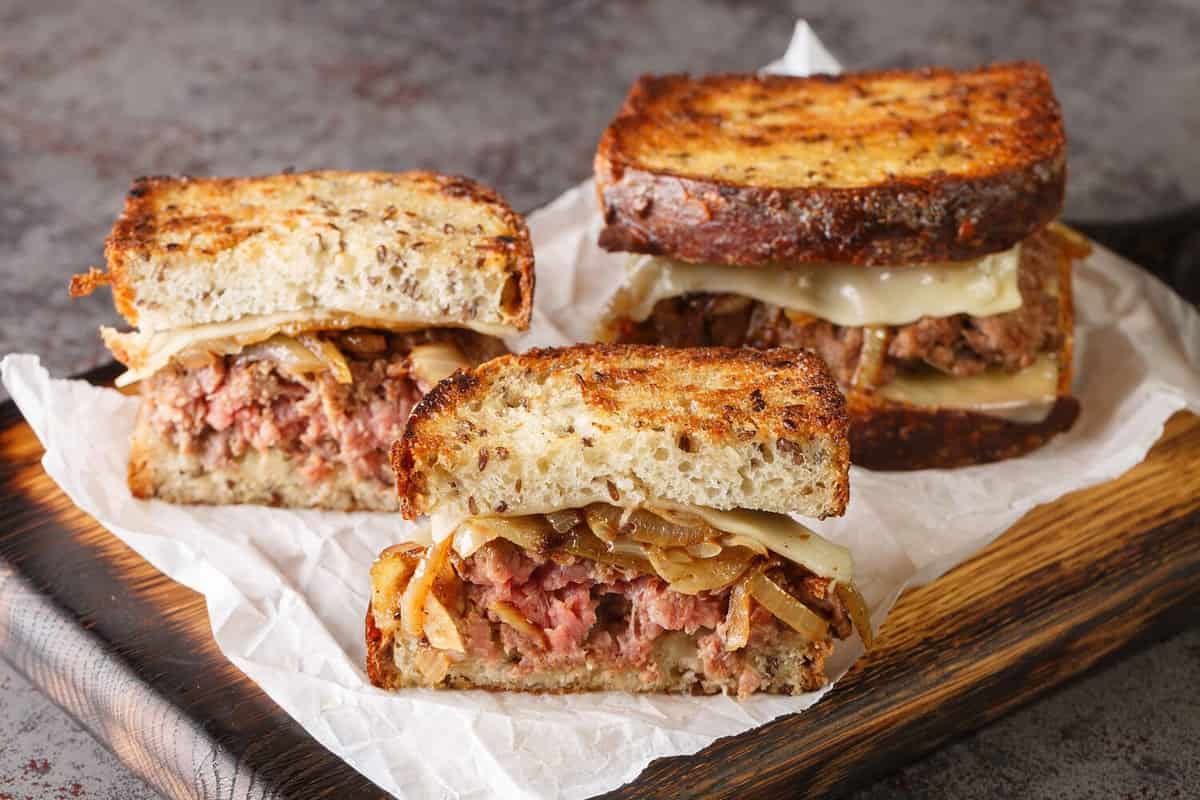
Sandwiches come in all shapes and sizes! Depending on your sandwich, use white bread if you want the fillings to stand out or wheat bread if you want to add some dynamic flavors.
©AS Foodstudio/Shutterstock.com
A Recap and Our Favorite Recipes
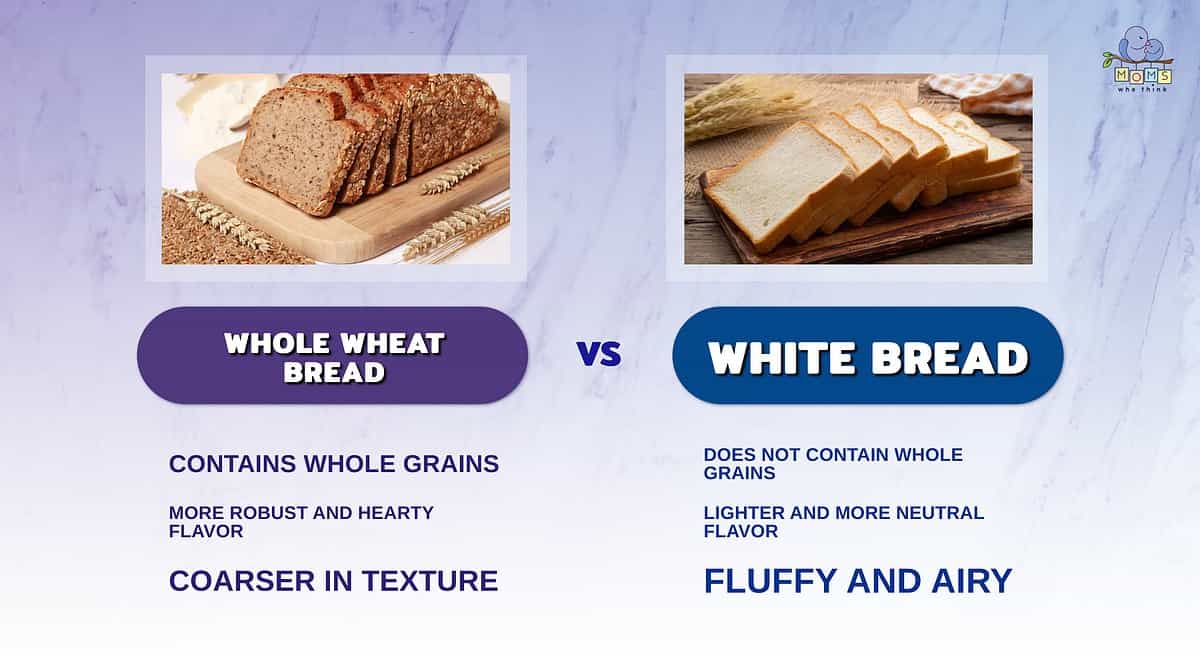
- Whole wheat bread contains whole grains, while parts of the grain are stripped from white bread during production. It's this change that creates the differences in taste and texture between these two breads.
- Some people feel that whole wheat bread has a robust, sweet flavor; others see it as earthy and bitter. White bread is fairly universally seen as a light and neutral-tasting bread, which has generated a lot of popularity for it.
- Since whole wheat bread contains whole grains, it is coarser and heavier than white bread. White bread is fluffy and light, which many people prefer.
There's no right or wrong when deciding whether you should purchase whole wheat or white bread! At the end of the day, it all comes down to preference and what you value in your bread. If you think whole wheat bread is too dense or earthy-tasting for you, go with white. If you want a bread that has a lot of natural nutrition, whole wheat is a fantastic choice. So, whether choosing white or wheat, here are our favorite sandwich recipes you can use with either option!
- Grilled Cheese Roast Beef Sandwiches Recipe
- Open-Faced Turkey Sandwiches Recipe
- Porcini Mushroom Patty Melt Recipe
Want to make some whole wheat bread for yourself? Use this recipe:
PrintCountry Brown Whole Wheat Bread
- Total Time: 57 minutes
Ingredients
- 2 cups milk
- 1/2 cup white sugar
- 1/2 cup molasses
- 1 1/2 cups whole wheat flour
- 1 1/2 cups bread flour
- 1/2 teaspoon salt
- 1 teaspoon baking soda
- 3 teaspoons baking powder
Instructions
- Butter and flour two 9×5 inch bread pans. Preheat oven to 350°F (175°C).
- In a small bowl combine milk, sugar, and molasses.
- Mix together whole wheat flour, regular flour, salt, baking soda and baking powder.
- Add to milk mixture and mix well.
- Pour mixture into bread pans. Bake for 45 minutes.
- Prep Time: 12 minutes
- Cook Time: 45 minutes
